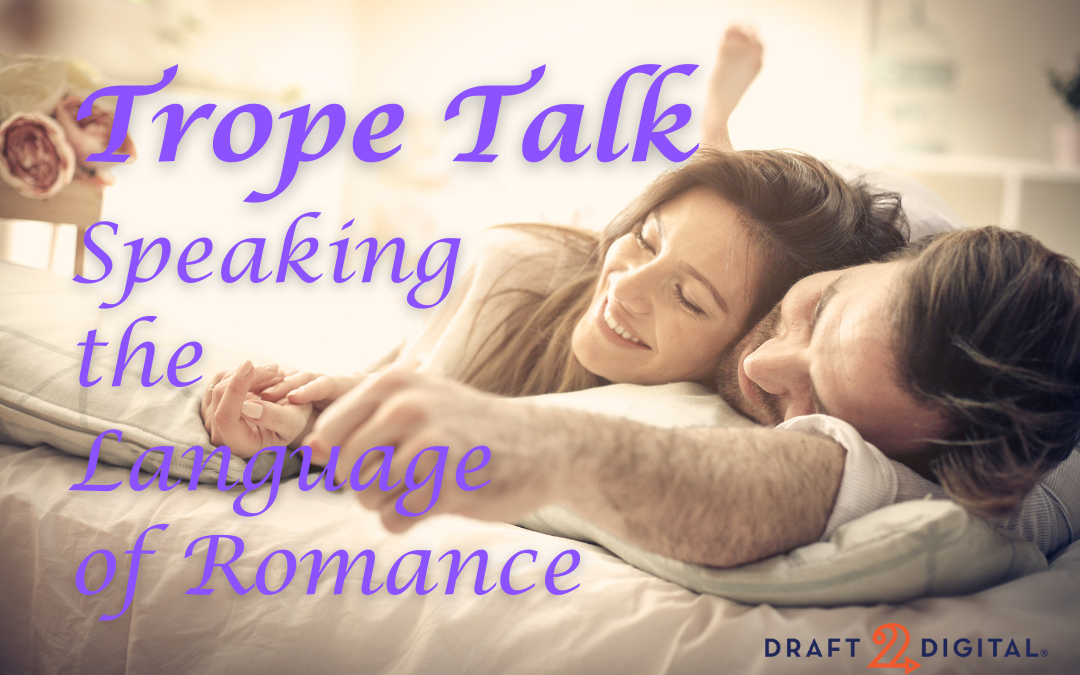While the world of literature continues to expand every year with countless new stories, one genre has continued to claim the top spot of the publishing landscape. As we at Draft2Digital press ever closer to our million-book milestone, many genres continue to find success with their loyal readers. With innumerable options for readers to pick up, no genre in indie publishing has found its era of dominance quite like Romance.
When Mark reported on Industry Insights last year, Romance made up 55% of Draft2Digital unit sales and revenue. This trend has not changed in 2023 as the genre’s offerings only grow more robust.
Like any genre, the stories in Romance are only limited by the imaginations and creativity of authors. Still, Romance has a reputation as one of the “tropiest” categories of fiction. Honestly, most Romance authors would agree; at Romancelahoma 2023, they hosted an entire panel about Romance tropes!
Tropes: The Not-So-Secret Language of Romance
Authors are creatives, and we always strive to create unique stories no one has ever read before. For this reason, some authors have been historically gunshy about using tropes in their writing. Given the ubiquitous nature of tropes, they feel like a universal shorthand, and that doesn’t feel original.
Growing as a writer means acknowledging that your story can be wholly unique while taking advantage of familiar themes and motifs. Tropes are not a writing crutch; they are a chance to prove yourself as a genre-savvy author who knows what your readers want.
Every Romance reader has their favorite tropes, and will commonly seek out stories that satisfy the niche they want to indulge. Understanding how to cater to those readers can lead to improved discoverability and reader retention.
Let’s explore some best practices for handling your tropes.
Your Cover Should Know What It’s Promising
Before your reader gets to page one, or even your book blurb, your cover is there to make a first impression. If you want to hook and keep your Romance readers, you want your cover to make the right impression.
Your cover makes promises of what a reader should expect in your book regarding themes, tone, and tropes, If a reader picks up your book and sees a warm, colorful cover with two characters sharing an embrace fireside in a cabin, they might realistically expect a cozy romance. They may even look forward to a “stranded in a snowstorm together” trope.
That reader is less likely to appreciate a surprise “bad boy dark mafia romance.”
Your choice of cover models, art styles, color templates, taglines, and even series titles all convey information to your reader. When used effectively, they can, at a glance, attract the right readers looking for a book just like yours.
Before you commit to your cover design, look around at covers that share your subgenre and your tropes. This can be the difference between making a book readers can’t put down versus a book they never pick up.
Market with Tropes
As we mentioned previously, Romance readers are the group most likely to consider tropes when looking for a new book. Because of this, genre-savvy authors and publishers aren’t afraid to use their book’s tropes prominently in their promotion.
When making social media posts or even your book blurb, you can include keywords that let your readers know what they can expect from the story. As an example:
Brett Branson didn’t become CEO of Prestigious Business without taking what he wanted. Things heat up in the office when the inexperienced new intern Rebecca realizes she’s the playboy billionaire’s newest obsession.
In two sentences, you have promised your reader a Boss/Employee affair, a billionaire alpha male, an office romance, and a playboy seducing an inexperienced or virginal heroine.
Tropes are so effective in marketing romance, that some authors have recently started advertising with graphics letting readers know exactly which classics they can look forward to.

It feels overly simplistic to break your story down into its base tropes without going into detail about the plot they’re part of, but you’d be amazed by what a few keywords and some squiggly arrows can accomplish. All it takes is a reader in the mood for an opposites attract romance and you’ve caught yourself a new reader.
Your Romance Tropes Don’t Define You
Tropes are a tried and true element of Romance and fiction in general, but they are not enough to carry a story. If your tropes promise what your readers can expect when they pick up your book, your unique story will be the reason they come back for more.
In publishing’s most popular genre, your plots, characters, and writing style set you apart from the next author writing reverse harem friends-to-lovers cowboy romance.
Tropes are just another tool on your belt to build the unique stories your readers will remember you for.
What are your favorite tropes to include in your writing? In your reading?
